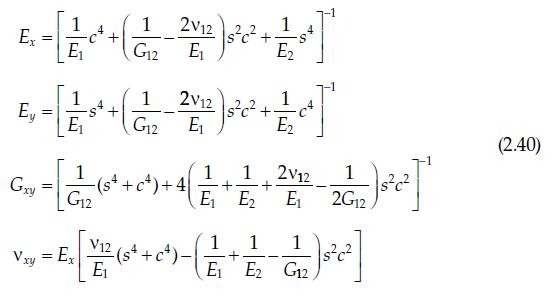Using the result from Problem 2.10 a. Find the value of the angle (theta) (other than (0^{circ})
Question:
Using the result from Problem 2.10
a. Find the value of the angle \(\theta\) (other than \(0^{\circ}\) or \(90^{\circ}\) ), where the curve of \(G_{x y}\) versus \(\theta\) has a possible maximum, minimum, or inflection point.
b. For the value of \(\theta\) found in part (a), find the bounds on \(G_{12}\), which must be satisfied if \(G_{x y}\) is to have a maximum or minimum.
c. Qualitatively sketch the variation of \(G_{x y}\) versus \(\theta\) for the different cases and identify each curve by the corresponding bounds on \(G_{12}\), which give that curve.
d. Using the bounds on \(G_{12}\) from part (b), find which conditions apply for E-glass/epoxy composites. The bounds on \(G_{12}\) in part (b) should be expressed in terms of \(E_{1}, E_{2}\), and \(v_{12}\).
Problem 2.10
Derive the third of Equation 2.40 for the off-axis shear modulus, \(G_{x y}\).

Step by Step Answer:

Principles Of Composite Material Mechanics
ISBN: 9781498720694
4th Edition
Authors: Ronald F. Gibson




